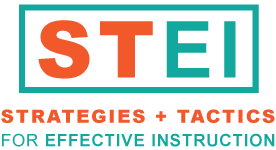Back to: Managing
A rule is a statement or guiding principle governing or directing behavior; however, some teachers don’t use the word “rule.” Instead, they list and promote classroom expectations. For some students the simple utterance of the word “rule” incites a challenge of authority. Here, “rule” and “classroom expectations” are used interchangeably.
Classroom rules help both teachers and students set limits and identify expected, appropriate, and desired behaviors. Classroom rules are a very important part of the overall management of the learning environment. To be truly effective, rules and expectations must be taught like any other content area and not merely posted in a classroom. They need to serve as an active framework for guiding both students’ and teachers’ behavior throughout the year. However, rules and expectations alone do not provide enough structure to keep students out of trouble. Students need to be “caught being good.” Reinforcement and recognition for positive and appropriate behavior are vital to modeling and demonstrating desirable classroom and age-appropriate behaviors while managing instruction.
Have rules for rules
Effective teachers set rules, monitoring and reinforcing them constantly and consistently. All students need to know what the class expectations are and be able to cite them as well as examples and non-examples of them. Here are ways to make and use rules effectively:
- Limit the number of rules to at least 3 and no more than 7.
- Write or state the rules positively; avoid “don’ts” and other language that reminds students of what is not allowed.
- Avoid the use of question formats. As the saying goes be careful what you ask for … students may answer you! For example, “Are you prepared?” Student response: “Yes I am, but unfortunately I left my books at home!”
- Write rules that are observable and measurable. Not only should everyone know exactly what each rule looks like (observable), they should be able to count them every time one occurs (measurable). For example, “Thanks, John, for following rule number three.” Or, “Someone isn’t following rule number four.”
- Set rules that are easily followed by everyone in the class and let students know the importance of following them by being a good “rule model.”
Simple and Effective Rules
- Raise your hand and wait for permission to speak.
- Be in your assigned seat when the bell rings.
- Put all work materials away before leaving class.
- Use an “inside voice” when working in cooperative groups.
- Follow all teacher directions promptly and respectfully.
At the risk of overemphasizing, it is important to under stand this point: Rules must be observable and measurable, and students must know what it looks like to be “on the rule” in order to spot it, monitor it, and correct it, if necessary.
Adapted from G. Rhode, W. R. Jenson, and K. Reavis, K. (1992). The tough kid book.
create general and inclusive classroom rules
There are many theories about whether students should participate in creating rules and expectations for the classroom. Sometimes students can be their own worst enemy. It is not uncommon for them to set high expectations and harsh consequences for rule infractions. “If you are late you must eat lunch in the boiler room for the rest of the year!” Identify what areas you believe need to be included in rule setting for your classroom. Identify the limits and what kinds of rules should be in effect. For example, you may consider including something about the following broad areas:
- Arriving on time
- Having appropriate or required materials
- Self-monitoring behavior during a lesson or while in class
- Completing assignments
Based on these four areas, generate general and inclusive rules or minimal expectations for all students. For example: Be in your assigned seat when the bell rings; Have needed books, pens, notebooks, and assignments organized at the start of class. Armed with these basics, you are ready to meet with the students to collaboratively set the classroom rules. Tell students the four areas and share your minimal expectations. Students can then help with the actual writing of the rules. This method is recommended regardless of the age of the students. The bottom line is that both the areas and the minimal expectations have been predetermined by the teacher. After all, you are the one ultimately accountable for your students’ learning and behavior.
There may be cases where a middle or secondary school teacher may see eight or nine groups of students daily. Most of these students will be capable of following classroom rules. But for difficult classes, specific rules may be needed. Teachers don’t need many different sets of rules but must be mindful of those individual classes that may need more structure.
Adapted from The Tough Kid VIdeo Series (1995).
have a Blanket safety-valve rule
Consider a blanket rule or “safety-valve rule” for your classroom. It is inevitable that situations will arise that are not specifically covered by any of the rules. What’s happening or behaviors may escalate where none of the classroom rules fit the situation. During these times you use the “safety-valve rule:” “Do what your teacher tells you, immediately!” Effective teachers know that this rule is reserved for only those times when it is necessary for a student or students to respond to a request immediately, perhaps when physical harm may befall the teacher or another student.
But beware–overuse of this rule will result in little or no response to it from the students. Students learn very quickly, “Oh brother, here he goes again. He can’t control the class, so he uses that rule that no one listens to anyway.”
Adapted from G. Rhode, W. R. Jenson, and K. Reavis, K. (1992). The tough kid book.
